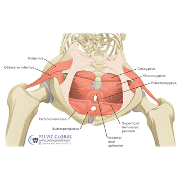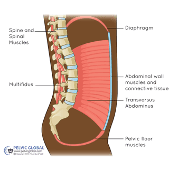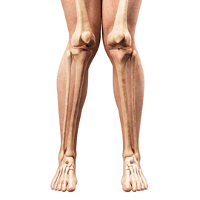By Sonya Worthy Okolo, PT and Victoria Hudson, SPT
Do any of these things sound familiar? Lifting, jumping, or running that causes pelvic, hip, abdominal, or back pain? What about pelvic pressure, bulge, or heaviness? Have you experienced bladder or bowel urgency or leaks? There are plenty of people trying to return to running/ fitness after baby, and physical therapy can help you do that safely with improved results.
We are excited to announce a workshop collaboration of Pelvic Floor PT & PT-Running Coach: “Postpartum Return to Run & Fitness”
I have a friend who is an avid long-distance runner…5 miles minimum or her day is incomplete.
“Although I regained my speed, running is not the same”, she said after having her 4 children.
No one ever told her how to go about it. So, after every child, she would set up her own plan to return to running. She resumed the activity she loves with a few annoyances holding her back. Still a few years from her last delivery, she often cannot complete a long run without needing to pause to use the restroom because she simply cannot hold it or feeling the occasional pain deep in her hip that flares after a very intense run.
Why are these changes happening? Childbirth, vaginal or c-section, causes weakness in your pelvic floor muscles; the ones designed to regulate your urine and fecal output, support your abdominal organs, and create stability in your pelvis and hips. Usually, if they are not trained during your pregnancy to prepare for birth, then this recovery of length, strength, and function can take a little longer. In addition, other tissues and structures in the core system are affected, especially if you have a c-section. With a high-impact activity like running, your body needs more time to recover to sustain the increase in intra-abdominal pressure and stress on pelvic structures.
For instance, the levator hiatus (a natural space between pelvic floor muscle to allow for passage of baby and other structures) widens during pregnancy and increases significantly during vaginal birth. In a UK research study, the recovery time for the tissues was estimated to be between 4-6 months, well beyond the traditional concept of full recovery by the 6-week postnatal check. As for c-section deliveries, it is understood that abdominal fascia has regained only about 50% of this original tensile strength in 6 weeks and between 73% and 93% by 6-7 months. Therefore, it is recommended to wait until 3-6 months after delivery to begin running again.1
Every body is different and requires a different plan of care. In general, a tiered progression of recovery stages allows for optimal pelvic health and prevention of injury:1-2
Stage 1 – FOUNDATION – Establish a strong foundation of posture, restore pain-free mobility, and pelvic floor and core muscle rehabilitation for activation and coordination.
Stage 2 – STRENGTHEN – Build on the foundation with body weight, total body strengthening, and low-impact cardio at 25-50% of your average intensity. Progressive increase of load resistance exercise, modified HITT, and core exercise, as needed to avoid doming of the abdomen.
Stage 3 – TRADITIONAL EXERCISE – Gradually progress modified exercises as you get stronger and return to traditional exercise. Low-impact cardio at 75-100% of your normal intensity. Only progress if NO pain, pressure, leaking, or doming at your core!
Stage 4 – RETURN TO HIGH INTENSITY – Seek Pelvic Floor PT and/or a running and postpartum fitness coach to screen for individual readiness to return. You should be able to perform your exercises with good core control, breathing, pressure management, and no leaking, pain, or pressure.

Returning to Running Postnatal Guidelines for medical, health, and fitness professionals managing this population and the Postpartum Return to Running Program for Physical Therapists, tells us about how to account for differing complications after birth before we focus on run training.
As Pelvic Floor PTs, we are looking for movement patterns and pelvic floor dysfunction that are not just going to affect your running but how you function every day with lifting, toileting, and intimacy with a partner. We want to consider breastfeeding, your joint mobility, mental/emotional state, potential scarring from delivery, and rate of perceived exertion, among other things when making recommendations for how and when to begin run training.

With a comprehensive pelvic floor assessment by a Pelvic Floor PT and the assistance of a running specialist, you can return to high impact activities and running with minimal complications. Return to run can best be broken up into three key areas of recovery:
- Strength training of Deep Core & Hip Stabilizers
- Load and impact management

Running creates about 2-3x bodyweight pressure as you are jumping from limb to limb. Sign up to attend upcoming workshops to learn screening tools, myths, and strategies to prevent injuries, leaks, and pain. Our guest workshop collaborator also offers a running video analysis service. Call for a postpartum (months or years) running screen today: 301-381-4551.
- Goom T, Donnelly G, Brockwell E. Returning to running postnatal – guidelines for medical, health and fitness professionals managing this population. 2019. 10.13140/RG.2.2.35256.90880/2.
- Stacey H, Lisa S, Kimberley S, et al. Postpartum return to running program for the physical therapist. APTA APH pregnancy and postpartum special interest group. 2023.

